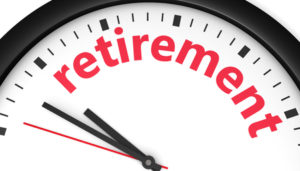By Rose O. Sherman, EdD, RN, NEA-BC, FAAN
For more than a decade, we have been warned to prepare for a tsunami of Baby Boomer nurse retirements. Nurse leaders in organizations throughout the country are now beginning to feel the impact of the retirement of so many of their seasoned long-term staff. In a Health Affairs blog post last week, authors Buerhaus, Auerbach and Staiger discuss this workforce trend and how organizations can better prepare for this wave of retiring nurses.
The numbers are staggering. Since 2012, more 60,000 nurses are exiting the workforce each year and this number will build to 70,000 by 2020. By 2030, 1 million Baby Boomer nurses will have retired.
With the departure of such a large cohort, nursing is not only losing seasoned professionals but also the decades of professional and organizational knowledge that they possess. Hardest hit will be states in the New England and Pacific regions where the workforce is older than the rest of the country. Many organizations are already seeing changes in the skill mix of their staff where the majority have less than 5 years of experience and finding preceptors is challenging. This can impact patient safety, the quality of care and nurse satisfaction.
Recently, I have been asking how health systems are preparing for these changes and whether there are plans to place to try to keep baby boomer nurses in the workforce for longer periods of time. I am finding that unfortunately this is not a high priority in the face of so many other challenges in healthcare today. Hours per patient day (HPPD) still drives staffing despite the changes in the skill mix.
Many nurse executives tell me that while they would love to modify the work hours of their boomer nurses to 4 or 6 hour shifts, economic constraints are making it almost impossible. Many baby boomer nurses would work longer but bedside nursing is physically taxing and for most – it is do the 12 hours or you can’t stay employed. Work accommodations for an aging workforce such as enlarged numbers on syringes, track lifts and enhanced computer screens are rare.
While the idea of using Baby Boomer nurses as unit based professional coaches to help new graduates in their transition is acknowledged as something that could really improve the work environment – few organizations are doing it. I have also found that many organizations don’t even have a clear picture of what they are confronting in retirements moving into the future because they have not done a workforce analysis.
As the blog authors point out, the impact on the nursing profession will be profound. A sadder commentary is that we are probably not prepared but should be because the data is there for all to see. The time for planning is now.
Read to Lead
Buerhaus, P., Auerbach, D. & Staiger, D. (May 3, 2017 Health Affairs Blog). How should we prepare for the wave of retiring baby boomer nurses.
© emergingrnleader.com 2017



 LinkedIn
LinkedIn Instagram
Instagram